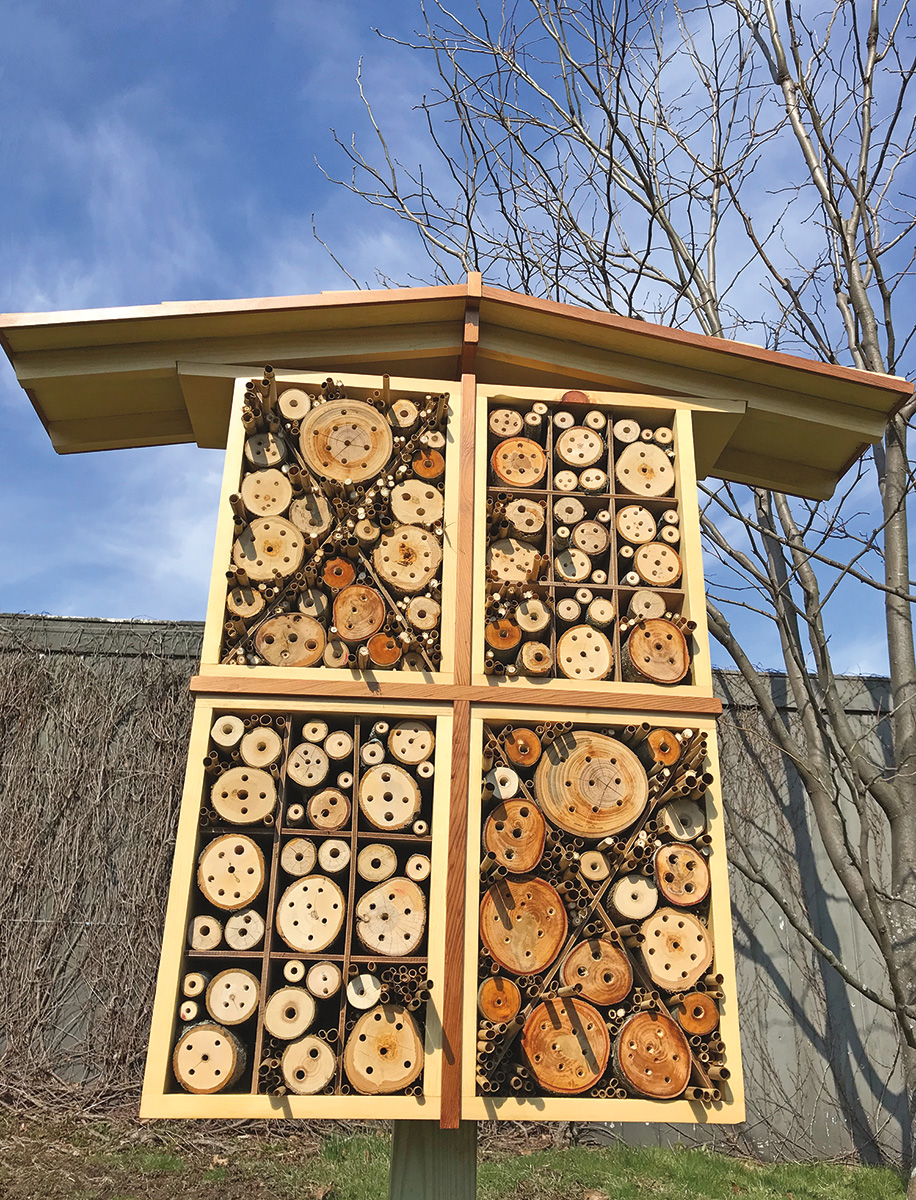Biodiversity of insects is threatened worldwide; data reveals dramatic rates of decline that may lead to extinction in as much as 40 percent of the insect population over the next few decades. In response, the Arboretum is working to help increase our bee population as a vital part of our ecosystem.
There are over 200 species of natives bees in New England. Unlike honeybee species, which are non-native, the majority of our bees do not live in colonies and none of them produce honey. Most of New England’s species are considered solitary bees, and females either burrow into the ground or find old cavities in trees and logs to lay their eggs.

At the Arboretum, we encourage bee habitat in many ways. We leave parts of our collection unmowed to provide habitat for ground nesting bees and leave snags and logs in the landscape for cavity dwelling species. To highlight the presence of native species to the public, we also constructed several native bees boxes, the largest of which is in the Leventritt Shrub and Vine Garden.
These boxes are filled with reeds, Japanese Knotweed stems, bamboo, and sections of drilled logs to provide habitat for leafcutter and mason bee species in particular. Nesting material is fully replaced with new reeds, bamboo, and logs every other year to prevent the build up of parasites.
Starting in the back of the cavity, each female lays one egg, leaves a packet of pollen and nectar for food, and then, depending on the species, uses mud or carefully cut leaves to wall the egg within a protective cell. She then proceeds to continue laying eggs, and constructing cells, all the way out to the tunnel entrance, which we she firmly plugs. Each hardworking female finds nest cavities, lays eggs, and provisions her future offspring with food without any assistance from the males or other helpers.
Visitors wishing to see females flying in and out of their tunnels should visit on sunny, warm afternoons. As the season progresses, look for sealed tunnels. Holes sealed with mud are mason bee tunnels, those sealed with green leaves were constructed by leafcutter species. Solitary bees are not aggressive and will not sting unless very thoroughly provoked.
